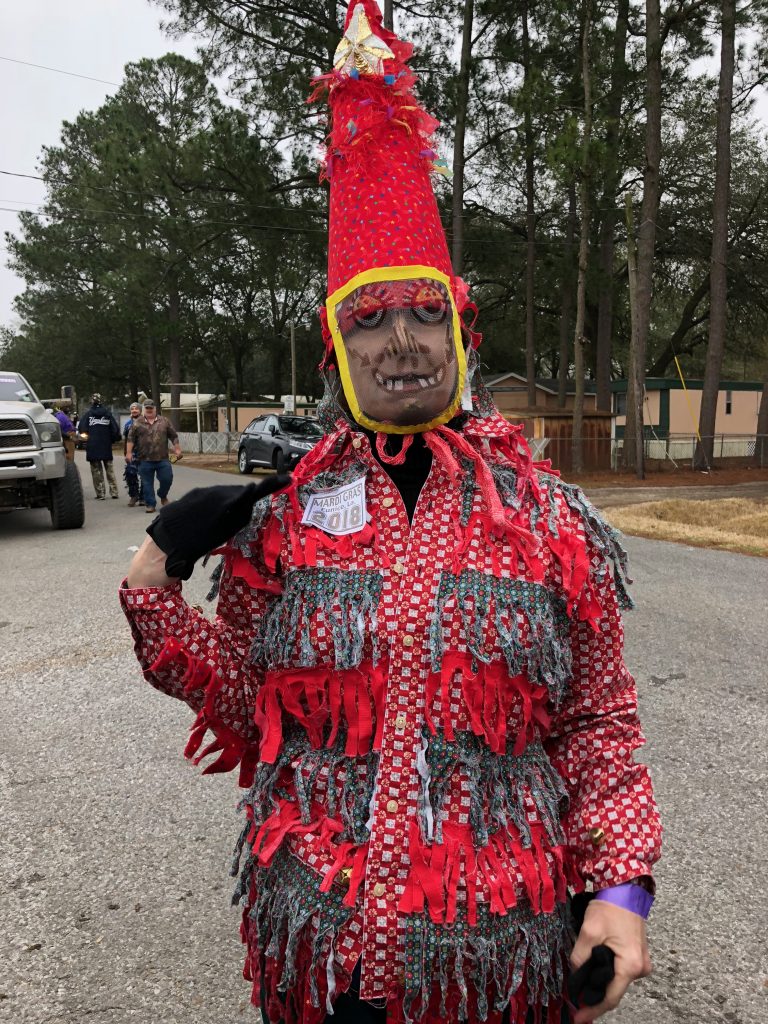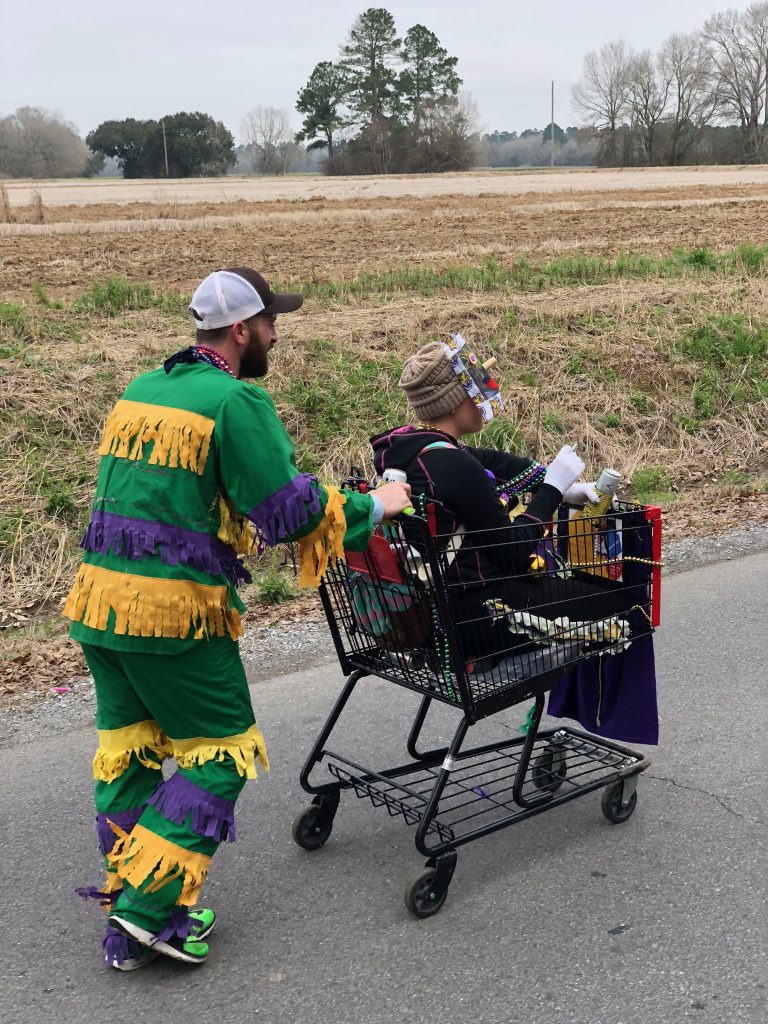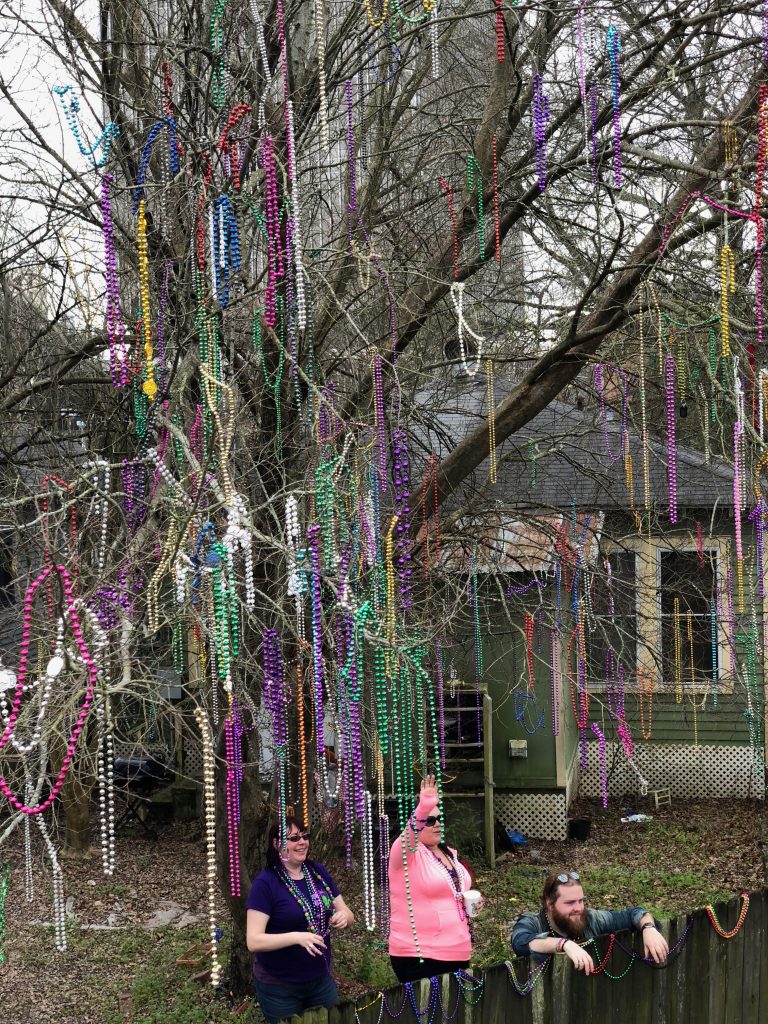I have only imagined Mardi Gras as to what you see on television. Extremely wild and far from family friendly. I found out that is not the case in Lafayette, Louisiana also known as Cajun Country. Located in the southwestern part of the state, Lafayette is the 4th largest city in the state of Louisiana. I’ll be honest, I didn’t know what to expect in this part of the state. By the end of my trip, I was incredibly surprised as to what this city has to offer. I think Mardi Gras in Cajun Country is something that should be experienced by everyone at least once in their lifetime.

History:
While Mardi Gras, French for Fat Tuesday, can be traced back to 1699 it was first celebrated in New Orleans and Mobile in the 1770s. It eventually made its way to other areas as the celebrations couldn’t be contained in just these cities. It combines ancient religious rites and customs which spread to the New World and now includes aspects from both the Native American and African cultures. Many of the rural parishes of Louisiana celebrate Mardi Gras as it was experienced hundreds of years ago.

One of the events I attended leading up to Fat Tuesday was called the Lundi Gras Boucherie at Lakeview Park. It was held in a small town called Eunice, approximately one hour outside of Lafayette. A boucherie was traditionally held to help the community survive the winter months with plenty of meat available. Now its a celebration that begins early in the morning where a hog is butchered and then local chefs spend the day cooking the meat. From cracklings to back bone stew, every part of the hog is cooked for the attendees to enjoy. While the meat is being cooked, attendees have drinks and spend their time socializing and dancing to the Cajun two-step in the barn. From the age of 5 to 85, everyone was participating. I love that everyone knows how to dance. It seemed like a special event to many as families were brought together for the festivities.






Traditions in Eunice
On Fat Tuesday, the actual Mardi Gras, we attended the Courier de Mardi Gras in Eunice. This tradition goes beyond anything I have ever seen and I have been all over the world. I think my shock didn’t come from the actual traditions but the fact this was celebrated in America and it was far from the wild French Quarter parades as I’ve seen on television. The costumes, the tradition, the excitement, surrounding the event was thrilling.
Attendees start lining up for this parade at 6am. The attire consists of pants and shirt adorned with fringed material. This is topped with something called a “Capuchon” which is a tall cone-shaped hat that is decorated like the costumes. The masks are typically made from window screens and are also painted. Masks are meant to hide the facial features so that you don’t know who you are speaking to. This actually began in the mid 1800s in Austria. Some attendees don’t speak at all or even remove their masks. This allows them to sort of get rid of their inhibitions. They also wear gloves to disguise their identity.
Runners go from house to house asking for ‘donations’ for the community gumbo. When they approach the homes, they dismount their horses and dance. The farmer provides a chicken which the attendees then chase it in hopes of catching it. In the past, it would have been added to the community gumbo once caught.
Revelers run through the crowd saying “Cinq-sous pour les Mardi Gras” which means ‘ a nickel for the Mardi Gras’. They usually don’t speak otherwise and just point to their hand waiting on you to hand them a coin. Dancing and eating only continues until midnight which marks the official start of Lenten season.







Parades in Lafayette
On the afternoon of Mardi Gras, I had the opportunity to ride in the Independent Mardi Gras Parade in Lafayette on a float sponsored by the Cajun Comic Relief. What an experience being able to throw beads to the 200,000 + attendees! As this was my first major Mardi Gras parade, I couldn’t believe how major this event is for some. Attendees lined the streets with many creative ways to catch beads from laundry baskets to fishing nets. There were also fun costumes and signs along the way. I think being in the parade was more fun than watching on the side lines.However, after nearly 3 hours of tossing beads I ended up sore for days. It’s a workout!

Photo provided by Lafayette Travel

 Credit: Lafayette Travel
Credit: Lafayette Travel
 Credit: Lafayette Travel
Credit: Lafayette Travel

Photo provided by Lafayette Travel








The Mardi Gras celebrations in Lafayette begin several days before Fat Tuesday. A list of future events can be found at http://www.lafayettetravel.com
Interested in visiting Lafayette for Mardi Gras or even just for a long weekend? Check out my Travel Guide: Lafayette, Louisiana .
